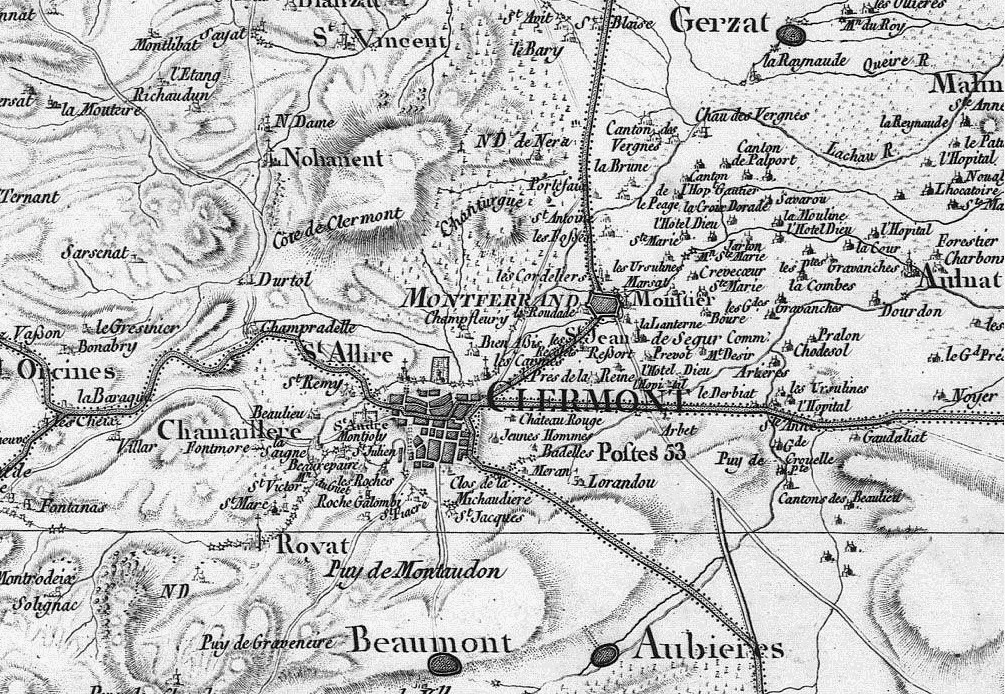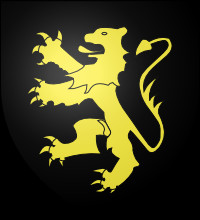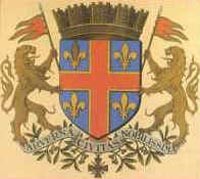Clermont-Ferrand: origin of the name and its coat of arms
As I mentioned in the introduction to my blog, I love doing cultural research on the places, people, and heritage of the countries where I live or have visited.
Thanks to the ERASMUS programme I had the opportunity to live in the town of Clermont-Ferrand for a year. Through this blog I would like to share my research with you and I hope that you will like reading my articles.
In this first article on Clermont-Ferrand, you will discover the origin of this town's name and its coat of arms. Happy reading!
The city of Clermont-Ferrand

The name of this beautiful city dates back to the beginning of the first century, as evidenced by the work of the Greek geographer Strabo, the city was called Nemossos. This is a Gallic term that indicates a sacred wood.
During the Gallo-Roman period, the name of the city was Augustonemetum, this Latin name was formed from the name of the Emperor Augustus.
From the 3rd century, the city takes the name of Arvernis and it isn't until 848 that the city takes the name of Clairmont, a reference to the castle of Clarus Mons.
Subsequently, at the beginning of the twelfth century, the Count of Auvergne William VI built a rival city on a nearby hill. In 1120, he founded the city of Montferrand to thwart the power of the bishops.
Throughout the Middle Ages and up until today, Clairmont and Montferrand are two distinct cities: Clairmont is the episcopal city and Montferrand is the county town.
Coming back to the origin of the town's name, the modern city named itself. The name comes from the union of these two ancient cities: Clairmont and Montferrand. This union was imposed by King Louis XIII with the Edict of Troyes and ratified in 1731 under King Louis XV. In 1731, the union was definitively sealed under the name of Clermont-Ferrand.

Clermont-Ferrand's coat of arms
Blue with a red cross lined with gold surrounded by 4 golden fleurs-de-lis.
The coat of arm dates back to the time of the bishop of Clairmont. When analysing this coat of arms, one notes the cross and the fleur-de-lis.
The cross may refer back to the first crusade which passed through Clermont in 1095. Regarding the fleurs-de-lis, they symbolise the links between the bishop of Clermont and the kings of France.

After the separation of the bishop of Clairmont, the town of Montferrand had its own coat of arms depicting a lion, which is seen from a seal and a counter-seal of Montferrand dated from 1226.

Eventually, in 1960 the city council of Clermont-Ferrand decided to officially adopt the Great Arms of Clermont which added to the original elements of the para-heraldic coat of arms.
The current coat of arms depicts a shield that represents the army of Clermont. There is also a crown on the top made from crenellated towers, recalling the Gallo-roman origins of the city. Two lions surround the shield, evoking the heraldic emblem of Montferrand. At the bottom of the shield, the 1939-45 war cross is suspended.
The two lions are depicted brandishing spears whose flags are in the colours of the battle flags of the old counts of Auvergne, who were the lords of the Clermont and its bishops.
The branches of a rubber tree hold the towns motto, indicating the importance of the rubber industry.
The city's motto is "Arverna civitas nobilissima" (the very noble Arverne city).
Photo gallery
Content available in other languages
Want to have your own Erasmus blog?
If you are experiencing living abroad, you're an avid traveller or want to promote the city where you live... create your own blog and share your adventures!
I want to create my Erasmus blog! →



















Comments (0 comments)